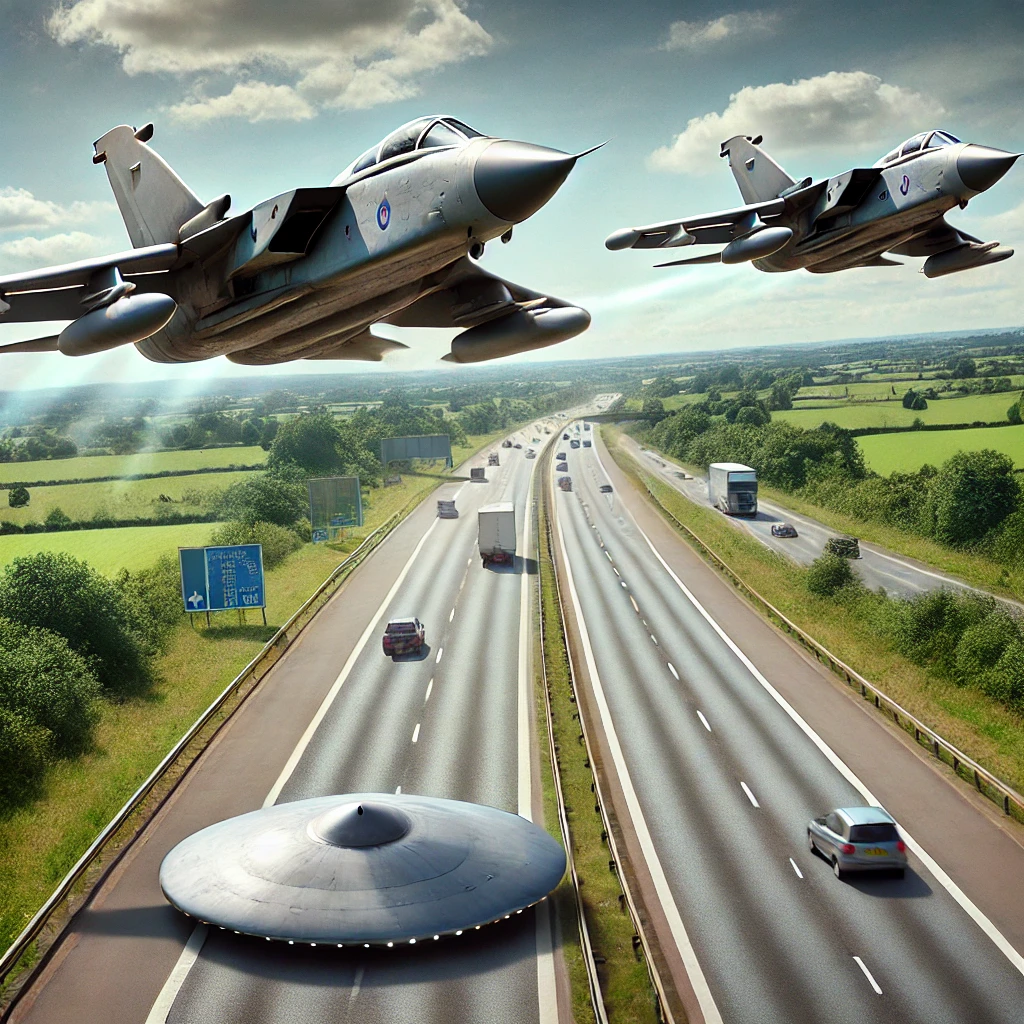Two Fighter Jets chase UFO in West Midlands UK (2010)

In April 2010, an intriguing incident took place in the West Midlands, UK, where two fighter jets were apparently filmed chasing a UFO along the M5 motorway. The footage, captured by an anonymous cameraman from a service station car park near Birmingham, has sparked a significant debate between believers.
The M5 motorway is a crucial route running from West Bromwich near Birmingham to Exeter in Devon, providing access to various key cities including Worcester, Cheltenham, Gloucester, and Bristol. The Frankley services, located between Junctions 3 and 4 of the M5, are likely the location from which the footage was taken.
Renowned UFO researcher Nick Pope, commented on the footage, noting its widespread media coverage and the intense discussions on numerous internet platforms. While some argue the video is a CGI fabrication, others believe it to be genuine, with conspiracy theories fueled by the MoD’s refusal to comment on its authenticity.
Nick Pope worked for the UK’s Ministry of Defence (MoD) for 21 years, from 1985 to 2006. During his tenure, he was assigned to the Secretariat (Air Staff) division, where he investigated UFO sightings and their potential implications for national defense, security, and air safety. Specifically, Pope managed the MoD’s UFO desk from 1991 to 1994. His work included evaluating numerous reports of unidentified flying objects and determining whether they posed any threats to UK airspace.
The fighter jets observed in the April 2010 incident on the M5 motorway were most likely Tornado F3s. Integral to the UK’s air defense strategy during that period, the Tornado F3 was renowned for its speed and agility, primarily used for interception and air superiority missions. These jets were stationed at key RAF bases, including RAF Leuchars in Fife, Scotland, and RAF Coningsby in Lincolnshire, England. RAF Leuchars, located approximately 370 miles north of Birmingham, and RAF Coningsby, about 115 miles east, were strategically important bases. Their proximity to the incident site facilitated the rapid deployment of Tornado F3s to respond swiftly to any unidentified aerial threat detected in the region.
The Tornado F3, developed by Panavia, was a variant designed specifically for air defense. It featured advanced radar and avionics systems essential for tracking and intercepting enemy aircraft. With a maximum speed of Mach 2.2 and a range of 1,390 miles without refueling, it was an ideal interceptor. Its armament included AIM-120 AMRAAM and Skyflash missiles, providing substantial firepower against potential threats.
RAF Leuchars played a crucial role in defending northern UK airspace, housing several squadrons of Tornado F3s until their retirement in 2011. RAF Coningsby, another primary base for the Tornado F3 fleet, also hosts the Quick Reaction Alert (QRA) force, responsible for defending UK airspace continuously. The strategic placement and capabilities of these bases underscore their significance in maintaining UK national security and rapid response capabilities.
Pope pointed out that if the footage were a fake, the MoD could have easily dismissed it, yet their silence has only heightened suspicions. He emphasized that jets are typically scrambled in response to potential threats to British airspace, and an uncorrelated target on radar would warrant such a reaction. Reflecting on his experience, Pope mentioned that while many UFO sightings could be explained as misidentifications, there were numerous cases involving pilots and radar tracking of objects performing extraordinary maneuvers.


